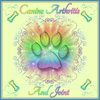|
By VeterinarySurgicalCenters
What is Cauda Equina Syndrome? Cauda Equina Syndrome (CES) is caused by compression of the nerve roots passing from the lower back toward the tail at the level of the lumbosacral junction. The most common cause of cauda equina syndrome is narrowing of the vertebral canal at the level of the lumbosacral joint (called lumbosacral stenosis). Lumbosacral stenosis is most commonly caused by degenerative changes to the intervertebral disc, arthritis of the joints, and abnormal proliferation of the ligaments. Dogs with abnormal shape to their last lumbar or sacral vertebrae and german shepherd dogs are predisposed to developing lumbosacral stenosis. Neoplasia (cancer) and infection at the level of the lumbosacral disc (discospondylitis) may also cause signs of cauda equina syndrome. What are the symptoms of Cauda Equina Syndrome?
The most common neurologic sign associated with CES is pain in the lower back. Signs of pain may include decreased willingness to jump up and climb up stairs, low tail carriage or reduced tail wagging, difficulty posturing to defecate, and whimpering/ crying if the lower back is touched. In some cases dogs will have a weakness or lameness in one or both hind limbs, which occurs secondary to compression of the nerve root supplying the sciatic nerve as it exits at the lumbosacral joint. If the compression of the nerve root causes significant pain, dogs may hold up a limb after exercise or cry out. Severe compression of the nerve roots can lead to fecal and urinary incontinence which is irreversible in most cases. |
How do you diagnose Cauda Equina Syndrome?
The first step in diagnosing Cauda Equina Syndrome is a neurologic examination. The doctor will observe the dog’s gait for any lameness and/or stiffness. A physical examination will include palpation over the spine to determine the site where the dog is most painful. Manipulation of the hips and tail will elicit pain response in most dogs suffering from cauda equina. The doctor will also test reflexes, proprioception (foot placement), and anal tone. Radiographs are taken to look for abnormal shape of the lumbosacral joint, spinal arthritis at the lumbosacral joint, infection of the disc space, or tumors. An MRI (magnetic resonance image) is the preferred imaging test to examine the nerve roots. In some cases CT (computed tomography) is used to better visualize the bone in dogs with lumbosacral disease.
The first step in diagnosing Cauda Equina Syndrome is a neurologic examination. The doctor will observe the dog’s gait for any lameness and/or stiffness. A physical examination will include palpation over the spine to determine the site where the dog is most painful. Manipulation of the hips and tail will elicit pain response in most dogs suffering from cauda equina. The doctor will also test reflexes, proprioception (foot placement), and anal tone. Radiographs are taken to look for abnormal shape of the lumbosacral joint, spinal arthritis at the lumbosacral joint, infection of the disc space, or tumors. An MRI (magnetic resonance image) is the preferred imaging test to examine the nerve roots. In some cases CT (computed tomography) is used to better visualize the bone in dogs with lumbosacral disease.
How do you treat Cauda Equina Syndrome?
The treatment directly correlates to the degree of the symptoms. Dogs who are exhibiting mild pain and have never had an episode of back pain before are usually treated with strict rest and pain medications. In cases where the dog is not responding to conservative, medical therapy or exhibiting neurologic symptoms, surgical intervention is necessary. The procedure is called a dorsal laminectomy and involves removing the ‘roof’ of the spinal canal to release the entrapped nerve roots and remove the associated ruptured intervertebral disc if present. If necessary, a foraminotomy is performed to open the nerve root canals and relieve the entrapped nerve roots. In some cases if there is significant instability at the lumbosacral joint, the joint is surgically stabilized with pins and bone cement.
The treatment directly correlates to the degree of the symptoms. Dogs who are exhibiting mild pain and have never had an episode of back pain before are usually treated with strict rest and pain medications. In cases where the dog is not responding to conservative, medical therapy or exhibiting neurologic symptoms, surgical intervention is necessary. The procedure is called a dorsal laminectomy and involves removing the ‘roof’ of the spinal canal to release the entrapped nerve roots and remove the associated ruptured intervertebral disc if present. If necessary, a foraminotomy is performed to open the nerve root canals and relieve the entrapped nerve roots. In some cases if there is significant instability at the lumbosacral joint, the joint is surgically stabilized with pins and bone cement.
|
What is the postoperative prognosis?
Prognosis is very good in dogs with mild neurologic signs (i.e. pain only, mild weakness). Dogs with severe nerve root compression and subsequent urinary or fecal incontinence have a very poor prognosis, and the majority of dogs never become continent again even with surgery. Surgery can work to alleviate the pain in these dogs, however. Many dogs with lumbosacral disease have other back problems (i.e. chronic intervertebral disc disease) and hip or other orthopedic disease, which can affect their recovery after surgery. Recovery is also slower in overweight dogs, and obese patients must be put on a strict diet to reduce their weight. Strict cage rest is critical to a good surgical recovery. Specific complications that can occur after surgery include formation of a fluid pocket or scar tissue that compresses the nerve roots or fracture of the bones at the surgery site. Dogs who are overly active after surgery are much more likely to develop complications. |
**Canine Arthritis And Joint is intended for informational, educational and entertainment purposes only and is not a substitute for medical advice, diagnosis or treatment. Do not attempt to self-diagnose or treat any health condition. You should always consult with a healthcare professional before starting any diet, exercise or supplementation program, before taking any medication, or if you have or suspect your pet might have a health problem. The opinions expressed by Canine Arthritis And Joint are not to be replaced for medical care. This website and the information contained herein have not been evaluated by the Food and Drug Administration. The information and opinions on Canine Arthritis And Joint are not intended and cannot be used to diagnose, treat, cure, or prevent any disease. This applies to people and pets!
This site uses affiliate links such as banners you may see that allows for paid commissions.
This site uses affiliate links such as banners you may see that allows for paid commissions.
Canine Arthritis And Joint © Copyright 2015-2024
Designed By Paw Prints Web Design
Designed By Paw Prints Web Design









